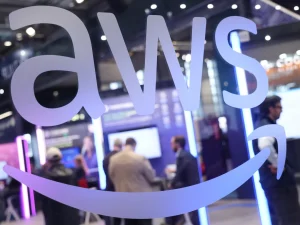-
On October 20, 2025, the internet had another major meltdown and Amazon Web Services (AWS) was at the center of it. A huge AWS outage disrupted multiple apps and websites globally, including Snapchat, Slack, Reddit, and several major news sites.

The sudden downtime caused chaos for millions of users who couldn’t access their favorite apps. Businesses, developers, and social media users alike were left scrambling for answers.
What Exactly Happened?
According to Amazon, the issue originated from a networking glitch in its US-East-1 data center, one of AWS’s largest hubs that powers services for major companies worldwide.
While rumors quickly spread about a cyberattack, Amazon confirmed it was a technical fault, not a hack. Still, the outage revealed just how dependent the internet has become on a few cloud giants.
During the disruption:
- Snapchat users couldn’t send or receive messages.
- Slack and Trello went offline for thousands of teams.
- Several news websites, banking apps, and e-commerce platforms experienced downtime.
- Even smart devices relying on AWS servers temporarily stopped working.
How Big Was the Impact?
AWS powers over 30% of the global cloud market, which means when it goes down, so does half the internet.
The outage lasted for about four hours, but its effects were felt for much longer especially for online businesses that rely heavily on AWS to stay connected.
Tech experts are now calling for better decentralization of the internet, warning that such outages will keep happening if most online services are concentrated under one provider.
Why Is This Story Going Viral?
Because it shows how fragile the internet really is. One error in a data center in the U.S. can take down apps used by millions of people around the world from New York to Lagos.
On X (formerly Twitter), hashtags like #AWSDOWN and #SnapchatCrashed trended for hours, with users posting memes, jokes, and frustration about not being able to connect.
Here are a few viral reactions:
“Can’t work, can’t chat, can’t scroll thanks, AWS 😂”
“It’s wild how one Amazon glitch just broke half the internet.”
“Time to touch grass until AWS fixes it.”
What You Can Learn From This
If you run a business or manage a website, this is a wake-up call.
Here’s what experts recommend:
- Use backup cloud providers: Don’t rely entirely on one.
- Monitor uptime constantly: Tools like UptimeRobot or Pingdom can alert you early.
- Have a contingency plan: Always know what to do when your platform goes offline.
For everyday users, it’s also a reminder that even the biggest tech companies aren’t invincible.
What’s Next for AWS?

Amazon has apologized for the disruption and promised to improve network reliability and add more regional fail-safes. However, this isn’t the first time AWS has faced such an outage similar incidents occurred in 2021, 2022, and 2024.
As more services move to the cloud and AI systems depend on real-time connectivity, outages like this could become even more disruptive in the future.
Final Thoughts
This week’s AWS outage wasn’t just another glitch it was a warning. The world’s reliance on a handful of cloud providers is both impressive and dangerous.
As tech continues to evolve, one thing’s clear: the internet needs a backup plan.

Recent Comments